The exhibition in Venice
Our curatorial approach and exhibition team
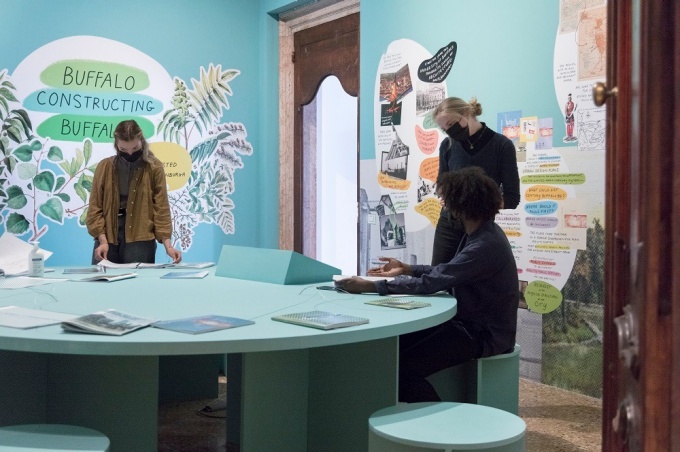
"Buffalo Constructing Buffalo: From Olmsted to Van Valkenburgh," installed at the Time Space Existence exhibition in Venice's historic Palazzo Mora. Photos by gerda studio.
This is a story about the citizens of Buffalo, their inspired vision for a world-class park, and the hard work we have done together to plan our city's future.
- Dean Robert G. Shibley, who leads the Imagine LaSalle effort and is curator of the exhibition.
The exhibition interprets the civic planning process behind the creation of the Ralph C. Wilson, Jr. Centennial Park: the thousands of citizens who shaped it, the foundation of city plans that informed it, and the best practices research that inspired it. That process has been guided by the faculty and students of the School of Architecture and Planning, whose engagement with the city dates to the School’s founding in 1969.
The exhibition in Venice, Italy, is presented as a series of "story boards" that interpret the civic planning process behind Buffalo's planning for the Ralph C. Wilson, Jr. Centennial Park. The story includes the community visioning process for the park, the history and foundation of city plans that informed it, and the best practices research that inspired it.
Twenty-one six-foot-tall illustrated panels wrap around the one-room exhibition space in the historic Palazzo Mora in Venice, Italy. Aberg-Riger’s scrolling text and visuals are designed to be viewed episodic manner or as a linear story, whatever the visitor prefers. UB students designed a special table at the center of the room, which will allow exhibit-goers to take a deeper dive into the planning reports, technical drawings and studies associated with Imagine LaSalle. Copies of the city’s full planning framework reveal the collective vision for Buffalo’s future. A video on Imagine LaSalle produced by John Paget’s First + Main Films will also be shown as part of the exhibit.
The "Buffalo Constructing Buffalo" exhibition at Time Space Existence in Venice, Italy, is made possible by the generous support of Robert Skerker and the University at Buffalo, The State University of New York.
The exhibition team

Robert G. Shibley
Curator| Dean and Professor, School of Architecture and Planning
An internationally regarded urban planner and architect, Bob Shibley leads the Imagine LaSalle effort in partnership with the University at Buffalo Regional Institute, the School of Architecture and Planning's regional planning research institute. Through a long-running partnership in community-driven planning with our city and region, Bob and our faculty and students have engaged thousands of citizen voices in planning Buffalo's future. The work has elevated public expectations for design and planning and spurred the rebirth of our region. “Buffalo will stand apart for this park because every design gesture, landscape element and programming decision began with the aspirations of our community. The process has evolved over decades in line with a city that elevates design in service to the public. It is the next chapter in a decades-long narrative of ‘Buffalo constructing Buffalo.’”
Through a long-running engagement with our city and region, Bob and UB faculty and students have helped engage thousands of citizen voices in plans for the city's downtown, waterfront, Frederick Law Olmsted-designed park and parkway system, and the region's economic future.
Bob Shibley has dedicated his career to advancing knowledge-based design and placemaking in service to the public. Dean of the School of Architecture and Planning since 2011, he joined UB in 1982 and holds professorships in architecture and urban planning. Over the past nine years, Shibley has guided the school to a top-ranked position in research generation among schools of architecture and planning in the prestigious Association of American Universities.
In 1990, Shibley founded The Urban Design Project, a university center for the study and critical practice of urban design. Under his leadership, the center developed an international award-winning ensemble of plans for the City of Buffalo’s downtown, waterfront and Olmsted park system, and its citywide comprehensive plan. He continues to advance this work through the University at Buffalo Regional Institute (UBRI), a regional planning research center that is leading Buffalo's latest wave of community-driven plans, including investment strategies around New York State's "Buffalo Billion," the redevelopment of Buffalo’s distressed East Side, and the creation of a regional stategy for sustainable development.
Prior to his appointment as dean, Shibley led the development of UB 2020: The Comprehensive Physical Plan as a senior advisor to UB’s president. He continues to guide implementation of that plan as UB’s campus architect.
Shibley has authored or co-authored 14 books and more than 100 publications. In 2014, the American Institute of Architects awarded Shibley with the Thomas Jefferson Award for Public Architecture. Shibley is also a recipient of the UB President’s Medal, and a fellow in both the American Institute of Architects and American Institute of Certified Planners.
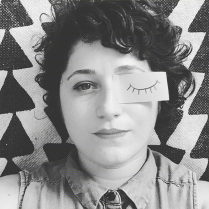
Ariel Aberg-Riger
Visual Narrative | Buffalo-based visual artist
Ariel Aberg-Riger, a Buffalo-based visual artist, developed the visual narrative of the exhibit. Her graphic narratives have covered topics from affordable housing to domestic violence and have been exhibited and published internationally. “As a visual storyteller, I use both text and found historical images and artifacts to bring narratives to life. My approach aims to slow readers down so they can truly immerse themselves in the story and wander through the past. Buffalo is such a beautiful city, and exploring the history and legacy of its parks and greenways was fascinating,” she says.
Ariel Aberg-Riger is a self-taught artist who is focused on using the power of visual storytelling to explore issues of equity and social justice, encouraging readers to think differently about history, science, policy, and the other forces that shape our lives. Her work regularly appears in CityLab, as well as publications like The Guardian and Teen Vogue. She is a 2020 NYSCA/NYFA Artist Fellow in Nonfiction Literature and is currently working on a book about American history and identity set to be published by Balzer + Bray / HarperCollins in 2022.
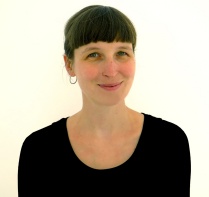
Julia Jamrozik
Exhibit Designer | Assistant professor of architecture, School of Architecture and Planning
Julia Jamrozik, a designer, artist, and educator, led the exhibition design. An assistant professor of architecture at UB, she explores the role of play in the built environment and alternative methods of documentation as a mode of historic preservation. “The idea behind the exhibit design is to try to show the complexity of the story while at the same time facilitating a coherent yet memorable visitor experience. The exhibit is bold but at the same time approachable."
Julia is an Assistant Professor in the Department of Architecture at the University at Buffalo. She is a designer, artist, and educator. Her academic research focuses on the role of play in the built environment and alternative methods of documentation as a form of historic preservation. She was awarded and Independent Project Grant from the Architecture + Design Program of the New York State Council for the Arts (NYSCA), and a UB Humanities Institute Faculty Fellowship.
Formerly, Julia worked as an architect at Herzog & de Meuron and taught architectural design studios at the ETH in Zurich as part of the Gastdozentur of Manuel Herz.
She has a multidisciplinary design practice with Coryn Kempster (www.ck-jj.com) working on projects in different media and at a variety of scales, from temporary installations to permanent public artworks and architectural projects. Their collaborative work was recognized in 2018 with the League Prize by The Architectural League of New York. Their book “Growing up Modern: Childhoods in Iconic homes”, which documents the stories of the original children inhabitants of Modernist houses and housing, was published by Birkhäuser in 2020.
The exhibition was designed with the assistance of UB Master of Architecture students Lukas Fetzko, Stanicka Mathurin, Rutuja Shinde, and Christopher Sweeney.
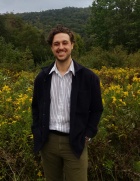
Lukas Fetzko

Stanicka Mathurin

Rutuja Santosh Shinde
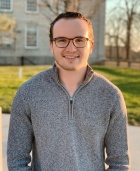
Christopher Sweeney
This is the second time UB has given world billing to Buffalo's inspired city-making and its role in that work. In 2018, the School of Architecture and Planning debuted See It Through Buffalo as part of the 2018 Time Space Existence exhibition. The documentary film explores the city’s urban landscapes as inspiration and setting for the School's place-based teaching and research. It was produced with First + Main Films of Buffalo.




.jpg.thumb.100.140.jpg)



